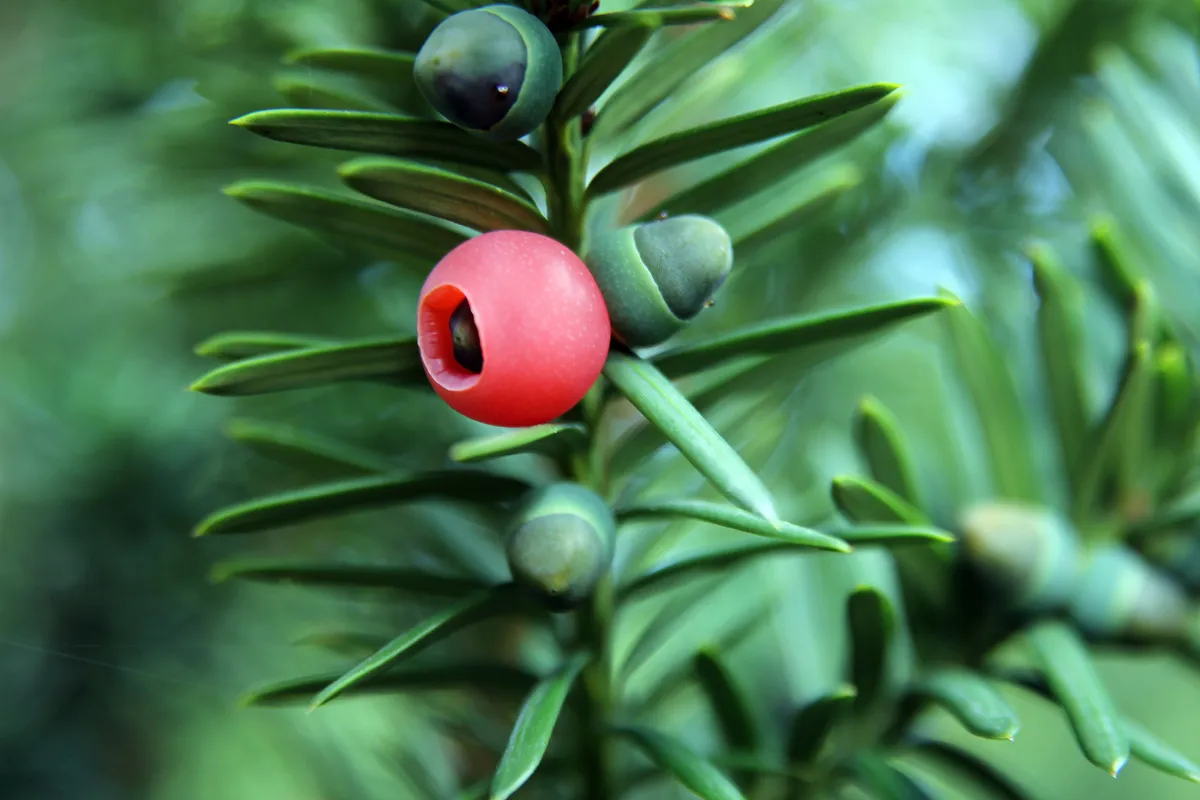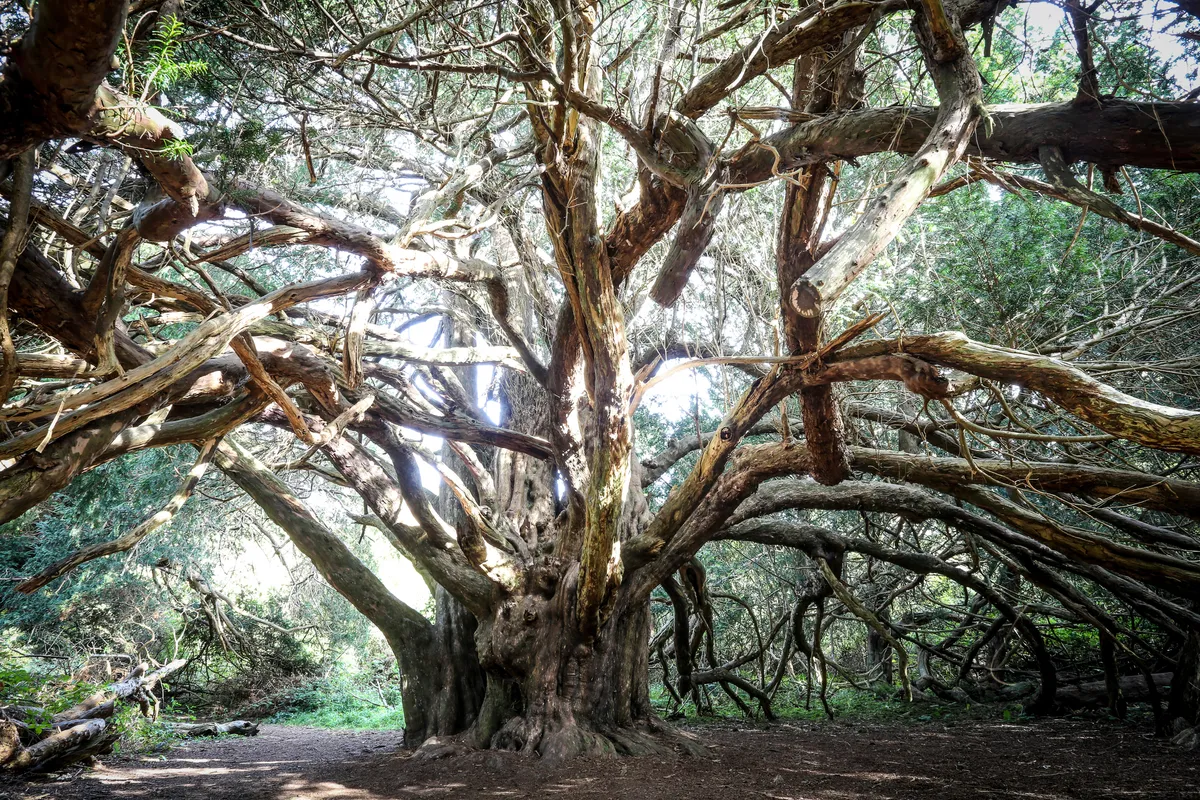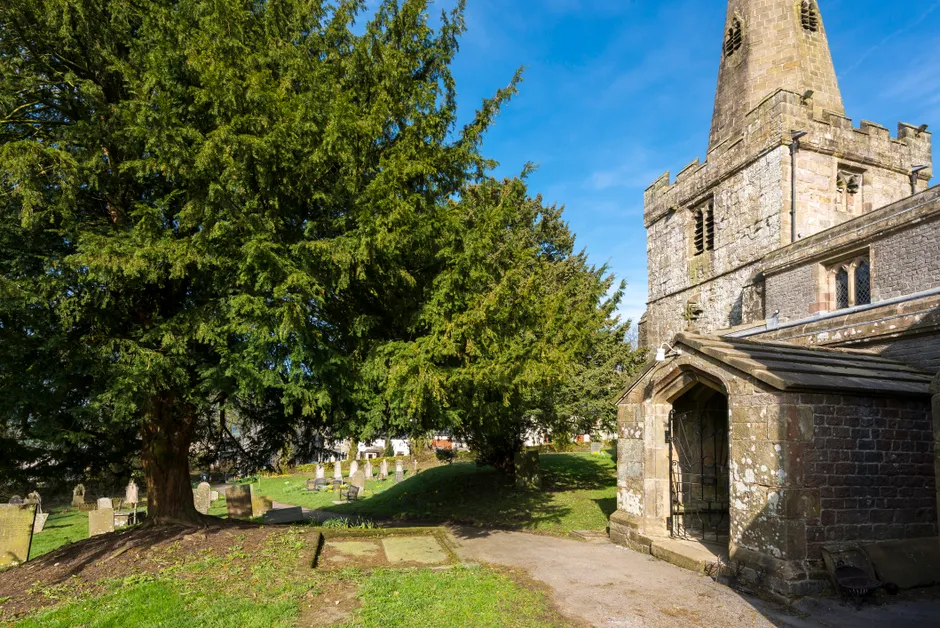The yew tree is one of the UK’s three native conifer plants (the other two being Scots pine and juniper). The species is famous for being incredibly long-lived and poisonous – and for being a good wood to make longbows from!
In 2022, the Waverley Abbey yew tree was named as the Woodland Trust’s Tree of the Year.
Are all parts of a yew tree poisonous?
The yew tree, commonly found in churchyards and grand gardens, is one of the most poisonous woody plants in the world.
Nearly all parts of the tree contain a toxic alkaloid called taxine. Taxine in small doses, typically under 50g of yew material, would be enough to cause severe gastric upset. However, doses over 50g or more (the equivalent weight of two AA batteries) would be enough to kill an adult human.
The tree’s toxicity may be one of the reasons it was planted in so many churchyards. Locals would have been put off taking their animals to graze in the churchyard for fear of poisoning.
The seed of the tree is also highly toxic, yet the flesh surrounding the seed is edible and sweet tasting, but you would need to spit the seed out or remove it before you swallow – and we wouldn’t recommend it!

This Q&A originally appear in BBC Wildlife, and was answered by Dave Hamilton.
How old do yew trees get?
Yew trees can get very old, and is possibly the oldest native tree species in northern Europe. A yew tree is not considered ancient until it has reached at least 900 years old.
There are ten yew trees in Britain that are thought to date from before the 10th Century.
The Fortingall yew in Scotland is thought to be thousands of years old, with estimates varying between 2,000 to 9,000 years old (a consensus of 5,000 years old was generally agreed upon around the Millennium).
How to identify yew trees

The leaves of a yew tree are green, small and thin, with a pointed tip.
The flowers bloom in March and April, and look different on male and female trees – yew trees are dioecious. Male flowers are very small and white-yellow in colour, whilst female flowers are green to begin with before turning brown.
The seed is enclosed within a red berry-like structure called an aril, unlike other conifers which have cones.
The fruit is eaten by a variety of mammals including squirrels and dormice, and birds, particularly thrushes such as blackbirds, mistle thrushes, and fieldfares.
What is the scientific name of the yew tree?
The scientific name of the yew tree is Taxus baccata.
Other species in the genus include Florida yew (T. floridana), Canada yew (T. canadensis) and Pacific yew (T. brevifolia).
Main image: Yew trees at Kingley Vale National Nature Reserve. © Paul Mansfield/Getty



